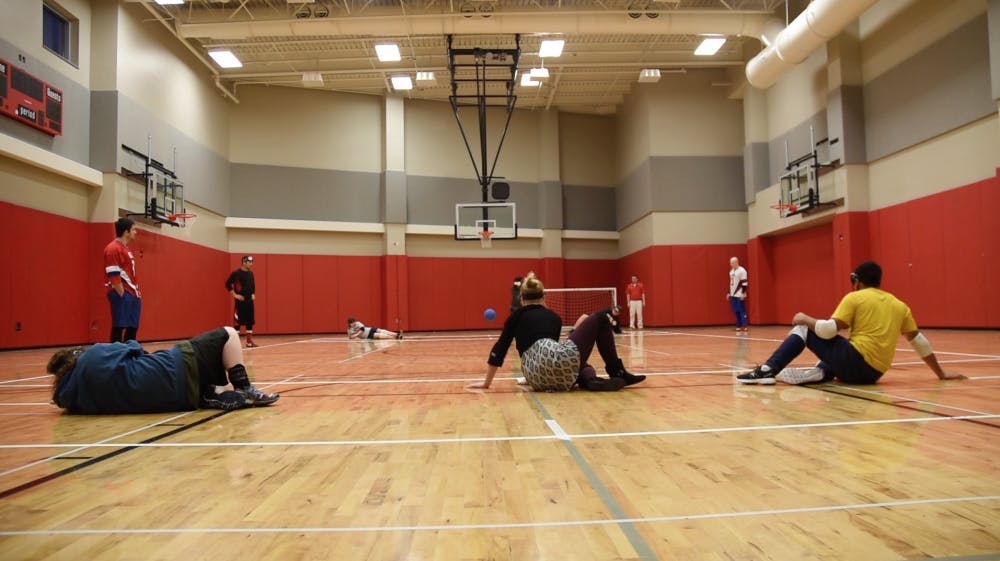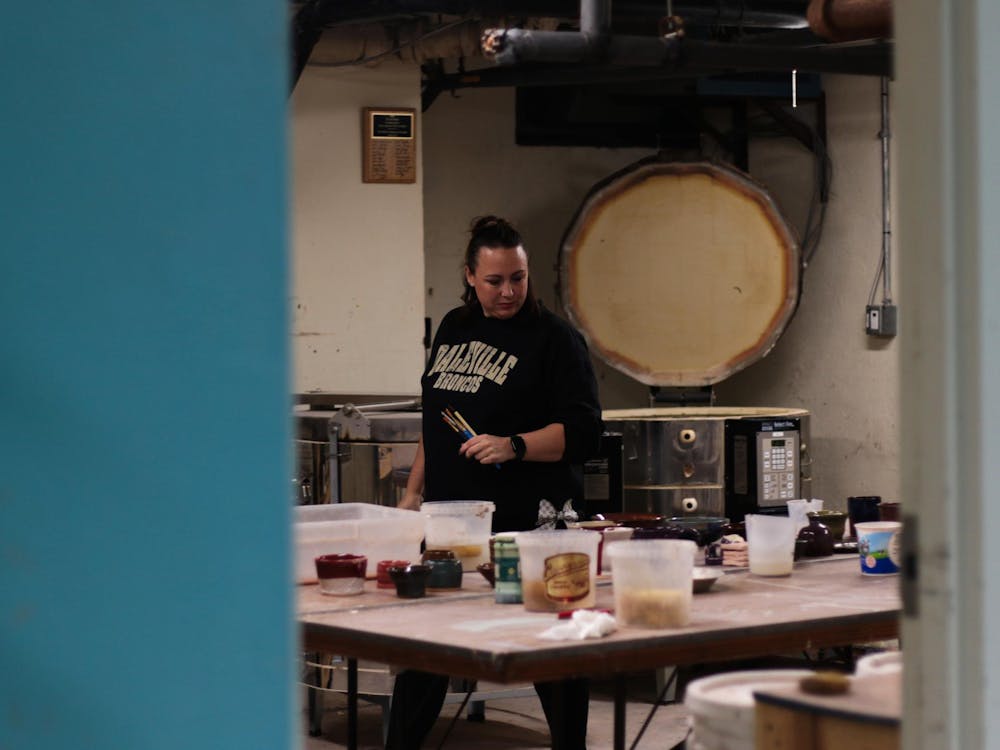The Paralympics begin Sept. 7, 2016, and the USA goalball team will be chosen in July.
Three USA goalball players came to Ball State to demonstrate the sport, which is geared to athletes who are visually impaired, on March 22.
Goalball players and their audience are silent during the games, but it’s not for a lack of enthusiasm. The game simply stresses one of the lesser used senses in sporting events — hearing — and takes sight out of the equation.
Players wear masks, which allow players with visual impairments to compete on an equal playing field as other players. The game is completely based around sound, so stadiums full of spectators remain completely silent.
Teams of three take turns playing defense using mainly their mid-section to block incoming balls that make noise. On offense, players throw with a style that looks like a mix between a discus toss and bowling.
Daryl Walker, a former Team USA player, said the top level competitors throw around 50 mph, and minor injuries like bloody noses and bruising are frequent.
Ball State students were able to try the sport after the athletes demonstrated. Most started out rather timid, but after a few throws back and forth were able to get into the sport.
Freshman Clayton Hamilton said he was nervous before he started playing with the team. Hamilton plays keeper for his fraternity and said playing defense is like being a goalie in soccer.
“You have to figure out where the ball is going and position yourself accordingly,” Hamilton said.
Walker said he didn’t think the sport looked all that difficult until he actually began playing. Walker has a background in football and was introduced to goalball as a high schooler in Florida.
Goalball originally began in 1946 as rehabilitation for World War II veterans who are visually impaired. In 1980, it was added to the Paralympics and has gained popularity since.
Grej Pesjaka is a 22-year-old who has been playing the sport for the past four years. Pesjaka originally began playing while in California, but he now lives in Fort Wayne at the United States goalball headquarters. When offered the opportunity to move to the goalball headquarters, Pesjaka said he jumped at it.
The story continues after this video.
“I was an easy decision to leave [Los Angeles]. This is something I am passionate about, and I wanted to commit to it,” Pesjaka said.
Pesjaka lives with four other Team USA hopefuls and the coach. At the center, they are able to work year-round in preparation for the Paralympics. They begin their training in the morning with skills and strategy training for about two hours on a court. Later in the afternoon, they work with strength and conditioning coaches to work muscles specific to the sport.
Pesjaka is one of ten hopefuls trying to make the United States team and compete in Rio de Janeiro this September at the Paralympics. The goalball season has no real offseason but officially runs from January to June. This season, there are more international competitions due to it being a Paralympic year. The top three teams currently are Brazil, Finland and the United States.
Pesjaka said demonstrations like the one on March 22 are essential to maintain interest in goalball.
“It’s why we play,” Pesjaka said. “It is to introduce people to the sport. We don’t want to see it die.”
|
The Paralympics begin Sept. 7, 2016, and the USA goalball team will be chosen in July. |





